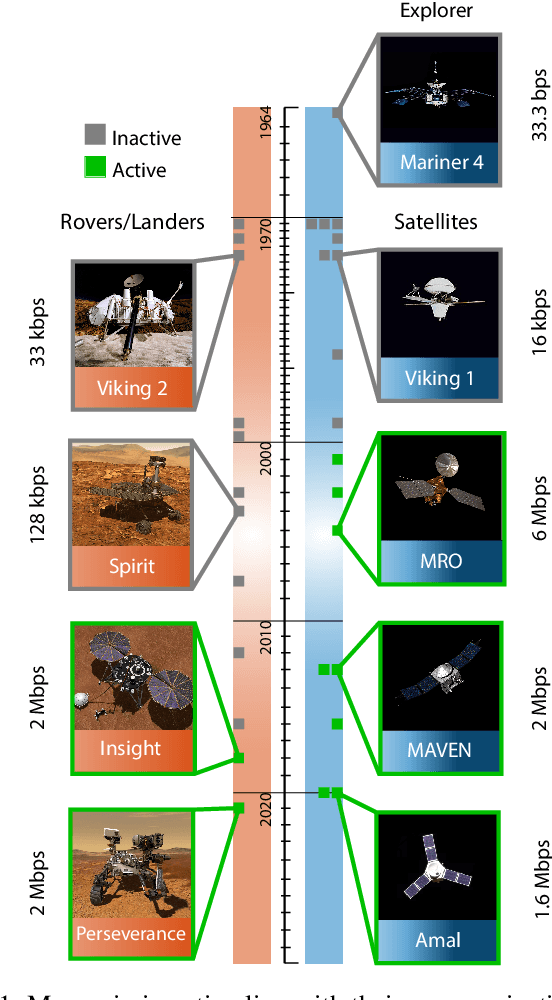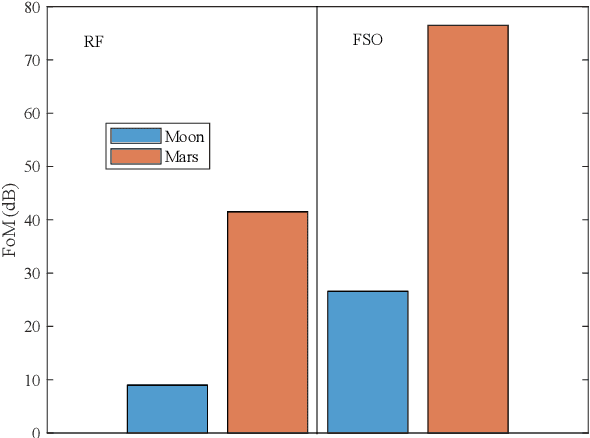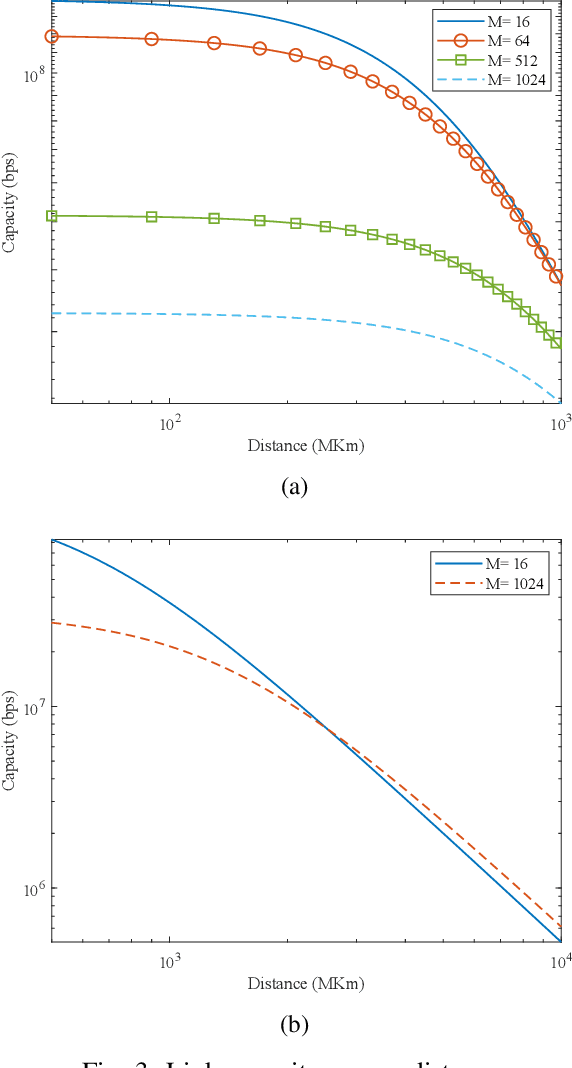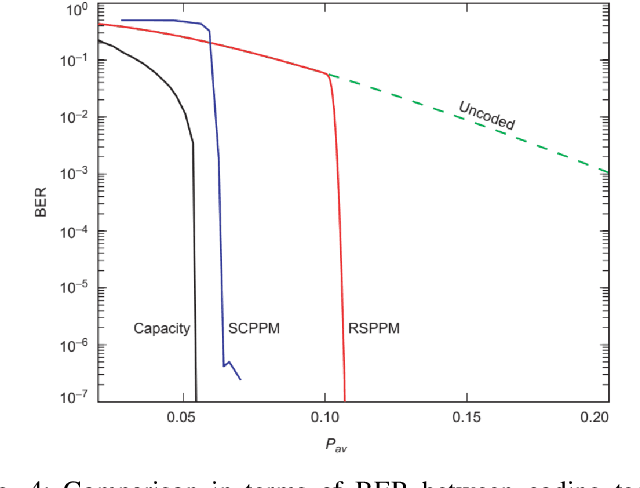Sarah Karmous
Connecting the Universe: Challenges, Mitigation, Advances, and Link Engineering
Feb 19, 2023Abstract:With the large number of deep space (DS) missions anticipated by the end of this decade, reliable-high capacity DS communication systems are needed more than ever. Nevertheless, existing DS communication technologies are far from meeting such a goal. Improving current systems does not only demand a system engineering leadership, but more crucially a well investigation in the potentials of emerging technologies in overcoming the challenges of the unique-ultra long DS communication channel. This project starts with a survey that highlights current technologies, trends, and advancements, investigates potentials, and identify challenges, and in essence, provide perspectives and propose solutions. It focuses on free-space optical (FSO) communication as a potential technology that can overcome the shortcomings of current radio frequency (RF)-based communication systems. To the best of our knowledge, in addition, it provides for the very first time a thoughtful discussion about implementing orbital angular momentum (OAM) for DS, identifies major related challenges, and proposes some novel solutions. Furthermore, we discuss DS modulations and coding schemes, as well as emerging receiver technologies and communication protocols. We also elaborate on how all of these technologies guarantee reliability, improve efficiency, offer capacity boosts, and enhance security in the unique DS environment. In addition to that, an extended study on the design and performance analysis of deep space optical communication (DSOC) is included, with the most suggested modulation for such a link being pulse position modulation (PPM) and a focus on the communication between Earth and the planet Mars, which is an important destination for space exploration.
How Can Optical Communications Shape the Future of Deep Space Communications? A Survey
Dec 07, 2022



Abstract:With a large number of deep space (DS) missions anticipated by the end of this decade, reliable and high-capacity DS communications systems are needed more than ever. Nevertheless, existing DS communications technologies are far from meeting such a goal. Improving current DS communications systems does not only require system engineering leadership but also, very crucially, an investigation of potential emerging technologies that overcome the unique challenges of ultra-long DS communications links. To the best of our knowledge, there has not been any comprehensive surveys of DS communications technologies over the last decade.Fee-space optical (FSO) technology is an emerging DS technology, proven to acquire lower communications systems size, weight and power (SWaP) and achieve a very high capacity compared to its counterpart radio frequency (RF) technology, the current used DS technology. In this survey, we discuss the pros and cons of deep space optical communications (DSOC). Furthermore, we review the modulation, coding, and detection, receiver, and protocols schemes and technologies for DSOC. We provide, for the very first time, thoughtful discussions about implementing orbital angular momentum (OAM) and quantum communications (QC)for DS. We elaborate on how these technologies among other field advances, including interplanetary network, and RF/FSO systems improve reliability, capacity, and security and address related implementation challenges and potential solutions. This paper provides a holistic survey in DSOC technologies gathering 200+ fragmented literature and including novel perspectives aiming to setting the stage for more developments in the field.
 Add to Chrome
Add to Chrome Add to Firefox
Add to Firefox Add to Edge
Add to Edge